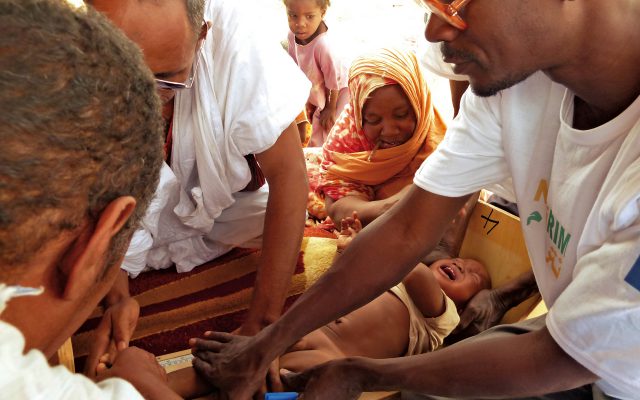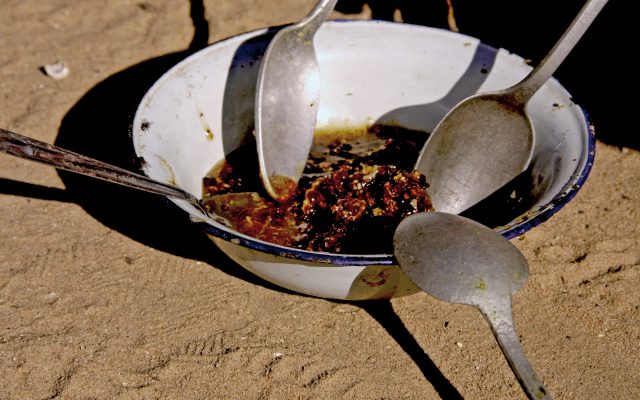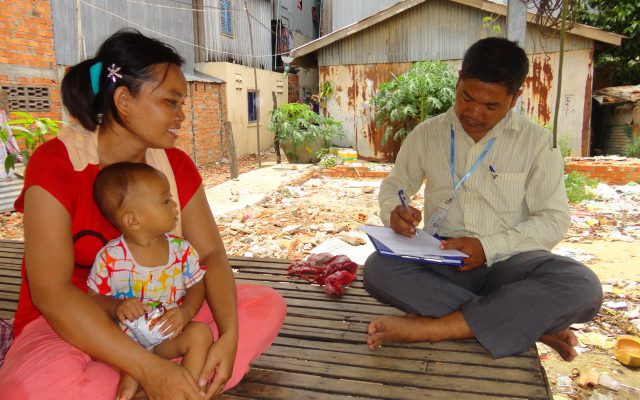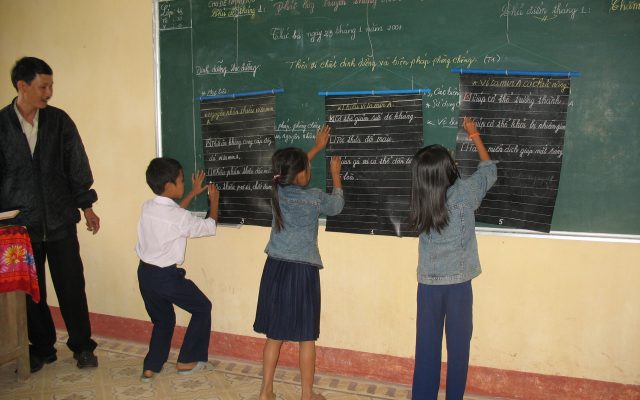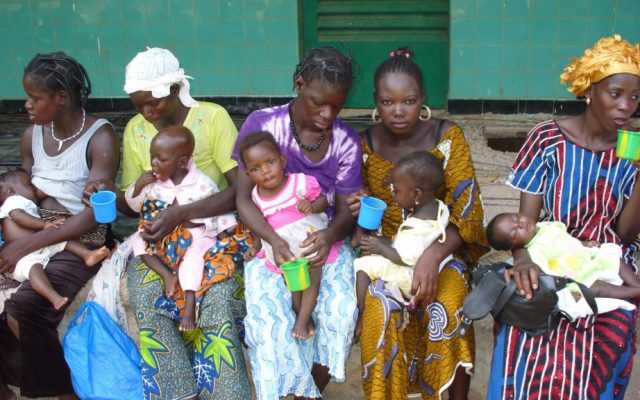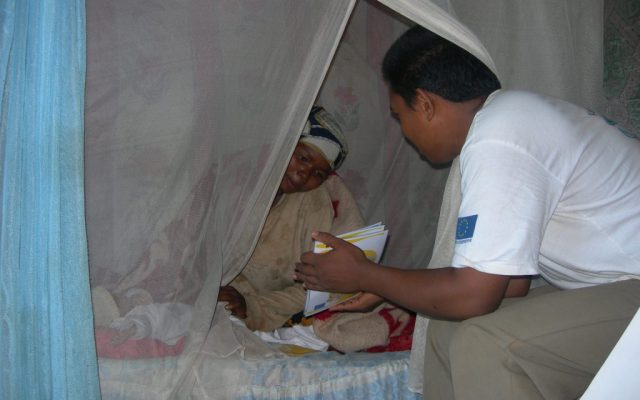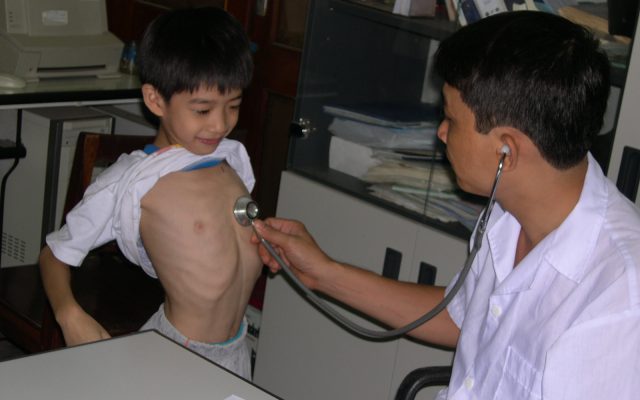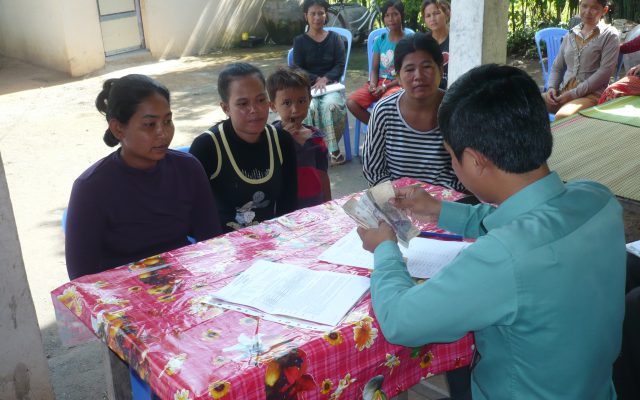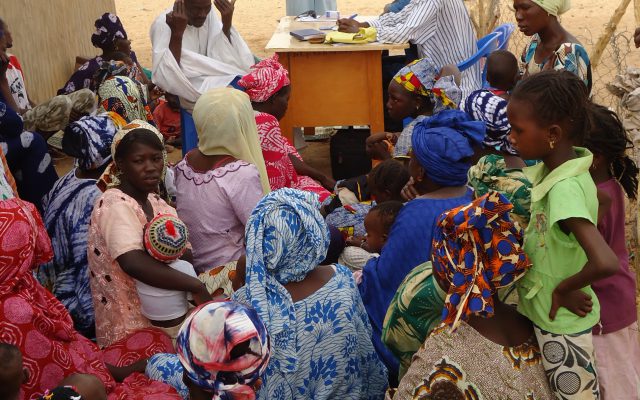
Focus
Nutridev is a programme, but above all it is an original, innovative method to fight against child malnutrition. It is rolled out to adapt to local contexts in each country.
A vision of malnutrition: a development issue
 Malnutrition is responsible, directly or indirectly, for the death of three million children in the world every year, i.e. one in every two deaths. Various forms of malnutrition coexist: wasting (10% of children under the age of 5), stunting (30% of children under the age of 5 in developing countries), micronutrient deficiencies, excess weight and obesity.
Malnutrition is responsible, directly or indirectly, for the death of three million children in the world every year, i.e. one in every two deaths. Various forms of malnutrition coexist: wasting (10% of children under the age of 5), stunting (30% of children under the age of 5 in developing countries), micronutrient deficiencies, excess weight and obesity.
Malnutrition is particularly devastating during the first 1,000 days of a child’s life. It leads to irreversible damage: stunting, morbidity, and physical and mental handicaps. Malnutrition feeds the vicious circle of poverty and under-development, as it does not allow new generations to contribute to the development of their country. This is why, in addition to public health issues, preventing malnutrition in developing countries is a major development issue.
An analysis of the determinants of malnutrition
Malnutrition in developing countries is the result of inappropriate food and illnesses. It depends on multiple factors, in particular the following:
- lack of knowledge on best breastfeeding, feeding, hygiene and healthcare These best practices are necessary for children prior to the age of 2, but also until adolescence, as well as for pregnant and breastfeeding women.
- Absence on the local market of fortified quality foods that are affordable for all;
- absence on the local market of quality fortified foods that are affordable for all;
- inadequate healthcare services and training on malnutrition issues;
- food insecurity, in contexts of recurrent crises, with emergency responses that are often inappropriate in terms of nutrition for the specific requirements of young children or pregnant and breastfeeding women;
- chronic poverty, restricting access to food that is sufficient in terms of quantity and quality.
Action must be conducted on these various determinants to prevent malnutrition, and in particular stunting in developing countries.
Three areas of complementary intervention
The Nutridev programme defends 3 complementary areas of intervention:
![]() Raising awareness on best feeding, hygiene and healthcare practices. This is done via strengthening of local stakeholders, involvement of influencers in communities to facilitate local transmission of knowledge or using the mass media or new information and communication technologies (mobile telephony).
Raising awareness on best feeding, hygiene and healthcare practices. This is done via strengthening of local stakeholders, involvement of influencers in communities to facilitate local transmission of knowledge or using the mass media or new information and communication technologies (mobile telephony).
![]() Making fortified foods available by supporting local businesses. This support focuses on the development and production of foods that are appropriate for nutritional requirements, feeding habits, international quality standards and families’ low levels of income on the one hand; and on the other hand it is directed at the promotion and distribution of these products in diverse and/or innovative distribution networks.
Making fortified foods available by supporting local businesses. This support focuses on the development and production of foods that are appropriate for nutritional requirements, feeding habits, international quality standards and families’ low levels of income on the one hand; and on the other hand it is directed at the promotion and distribution of these products in diverse and/or innovative distribution networks.
![]() Improving the quality of healthcare services by training healthcare stakeholders and supporting national community health policies. This pillar is implemented in close collaboration with GRET’s health experts, and links are created with social health protection systems.
Improving the quality of healthcare services by training healthcare stakeholders and supporting national community health policies. This pillar is implemented in close collaboration with GRET’s health experts, and links are created with social health protection systems.
Based on experiences, the Nutridev method is being enriched with innovative solutions generated by experiments in the field, the programme is reorienting and strengthening its modes of action, to the benefit of all the territories it works in.
The process
The Nutridev method is implemented in various stages making it possible to analyse contexts and adopt appropriate solutions:
- diagnosis of the situation on the nutritional status of children, direct and underlying causes of malnutrition, feeding and healthcare practices, local availability of food, existence of local businesses and their characteristics with a view to producing fortified foods if necessary.
- implementation of actions around the 3 pillars of the Nutridev method: provision of fortified foods by supporting the local private sector, raising awareness on best nutrition practices, and support for healthcare stakeholders.
- monitoring/evaluation and capitalisation to constantly improve the method and share the lessons learned with stakeholders in the fight against child malnutrition in developing countries. See publications
- recommendations for local, national and international public policies, in order to make results last over the long term. See positions
Some concrete examples
When justified by the context, and when quality fortified foods are not available or affordable locally for children aged 6-23 months, women or pre-school and primary school-age children, the Nutridev programme facilitates their provision. To do this, it supports the local private sector with:
- the development of fortified products (ready-to-cook flour, instant flours, food supplements, biscuits, fortified drinks, etc.) that meet the nutritional requirements of the target audience, that are suited to the eating habits and sanitary conditions in the localities of intervention, using local products that are available at an affordable price for the largest possible number of people.
- the production of food by local businesses. According to countries, businesses supported can be micro-businesses or small businesses (often the case in West Africa), or average-sized businesses in the agrifood or pharmaceutical sectors (Taf in Madagascar, PPM in Cambodia). Each type of stakeholder is supported according to his/her needs, to produce in compliance with international quality standards.
- Distribution and promotion: GRET finds original distribution opportunities when traditional circuits are lacking, and supports companies to promote their products via proximity social marketing or mass communication.
For example, in Burkina Faso, GRET set up a women entrepreneurs’ network to distribute fortified foods in precarious neighbourhoods in Ouagadougou:
Commercial promotion must be accompanied by awareness-raising. The latter does not have the same objectives, as it is aimed at a change in families’ practices with a view to them taking better account of nutritional, hygiene and healthcare requirements for children and pregnant and breastfeeding women. Via mass media (radio, television, mobile telephony), group events (neighbourhood parties, theatre-discussions, cinema-debates) or via individualised approaches (home visits, weighing sessions), messages adapted to suit contexts and needs are circulated to families. The healthcare system and local organisations are trained and equipped to be key stakeholders in awareness-raising at community level.
“In Burkina Faso for example, we organise cinema-debate events in villages”, explains Tahirou Traoré, Nutridev programme manager in Burkina Faso. “We show a film that lasts about twenty minutes, a fiction featuring Burkinabe actors on a problem concerning child malnutrition, or interviews with experts. The screening is followed by a debate between inhabitants, healthcare workers and the GRET team. The whole village is invited! It also provides an opportunity to put questions to healthcare workers.”
Malnutrition is directly caused by an inadequate diet, inappropriate healthcare and feeding practices, and the occurrence of illnesses. Food insecurity of households, substandard family environments (water, sanitation, etc.) and inappropriate health services are possible determinants. This is why GRET, as part of the Nutridev programme, defends and applies a multi-sectoral approach, specifically targeting women and children, but also more broadly targeting the general population to fight the various determinants of malnutrition.
Nutrition and health
In order to break the vicious malnutrition-illness-poverty cycle, GRET works to improve the health of vulnerable populations both with the Nutridev programme via actions to raise awareness on mother and child healthcare and family planning, and improving the quality of healthcare services, but also via links with other GRET programmes to develop social health protection systems. More information on GRET’s health and nutrition programme.
Nutrition and agriculture
Nutrition and agriculture are very much interconnected as food security is a prerequisite for good nutritional status. Agriculture plays an important role with the production of food, access to employment and monetary income, but increasing agricultural production is far from being a sufficient response to fight against malnutrition. Access, quality, use of food and best feeding practices for the women and children who are most vulnerable to malnutrition are essential. Employment for women and use of agricultural income to pay for healthcare can have a significant effect on nutrition. See GRET’s position with Coordination SUD
GRET strives to better understand and come to grips with these links between agriculture and nutrition in various contexts. In several countries (Burkina Faso, Madagascar, Haiti, Myanmar), Nutridev leads integrated projects to improve food and nutritional security for families within single territories.
Nutrition and entrepreneurship
Very often, disadvantaged families have difficulties preparing balanced meals for their children (ingredients can be difficult to find, high prices, lack of time to prepare meals, lack of knowledge on food balance, etc.). Mobilisation of the local private sector to produce and market manufactured complementary foods is a solution enabling the provision of quality foods that are quick and easy to prepare and affordable for the largest possible number of people. The local private sector can prevent malnutrition by producing these foods locally, marketing them at affordable prices and contributing to job creation to participate in the economic development of countries. See GRET’s position on public-private partnerships to fight against malnutrition
“Today, the context is restrictive and does not provide sufficient incentives for the local private sector to invest itself in the fight against malnutrition. There is no doubt that we must engage in stakeholder coalitions to encourage greater mobilisation of the private sector, while managing its action (…) and change the perception in international structures reflecting on these issues.” says Olivier Bruyeron, managing director of GRET.
In Madagascar, GRET initiated the creation of the first social business fighting against malnutrition: Nutri’zaza.
Nutrition: connecting emergency and development
Certain areas badly affected by malnutrition suffer recurrent climate, food (hunger gap) and multi-factor crises. In several countries, GRET is testing solutions to make the connection between emergency and development, and guarantee responses in crisis periods that best meet the nutritional needs of families.
- In the various territories of intervention, GRET defends the use of quality fortified foods produced locally for emergency responses. See the position in Burkina Faso [in french only]
- In the South of Mauritania, GRET is testing monetary transfer systems with a nutritional goal to meet the specific healthcare and nutrition requirements of children and pregnant and breastfeeding women.





